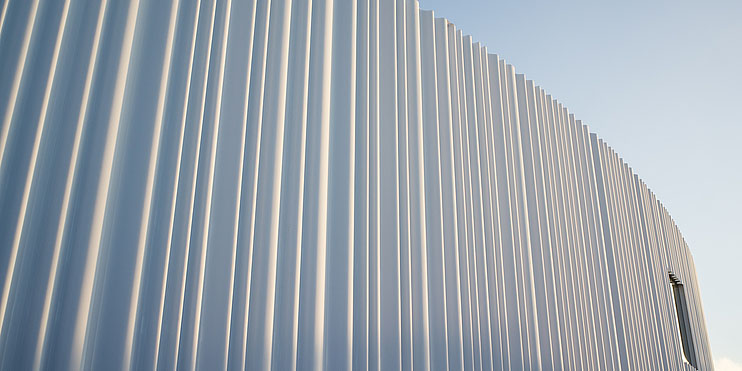Downloads
DOI:
https://doi.org/10.7480/jfde.2013.1-2.649Abstract
Acrylic glass is omnipresent in the industrialised world; but as a building material most architects, facade planners and engineers are still unfamiliar with this material. In most cases it is applied as a substitute for glass which leads to inappropriate joints and fixtures. During the years of the path toward the digital era, the authors were in the fortunate position to be involved in several unconventional glass and acrylic glass projects.
On the basis of their most recent project, the facade of the Vitra VSL Factory by SANAA Architekten, they describe the development of a facade for which they chose acrylic glass not as a substitute for glass but rather as a conscious material choice. Since the entire facade is it was possible to apply the manufacturing technology of deep-drawing, allowing for very thin wall thicknesses.
How to Cite
Published
Issue
Section
License
Copyright (c) 2013 Matthias Michel, Holger Techen

This work is licensed under a Creative Commons Attribution 4.0 International License.
Authors or their institutions retain copyright to their publications without restrictions.
References
Bauüberwachungsverein. (2010). BÜV Empfehlung: Tragende Kunststoffbauteile im Bauwesen [TKB], Berlin, Germany.
Ehrenstein, G. (1999). Polymer-Werkstoffe: Struktur - Eigenschaften - Anwendung. (pp. 99-102). Munich, Germany: Hanser Verlag.
Hagl, A. (2006). Die Innovation – Kleben. Stahlbau, 75, 508-520.
Hagl, A. (2007). Bemessung von strukturellen Silikon-Klebungen. Stahlbau, 76, 569-581.
Knippers, J., Cremers, J., Gabler, M., Lienhard, J. (2011). Construction Manual for Polymers + Membranes, Munich. Germany: Birkhäuser Verlag.
Michel, M. (2010). Acrylic Facades, Three Case Studies. In U.Knaack & T.Klein (Eds.), The Future Envelope 3 (pp. 1 -12). Amsterdam, Netherlands: IOS Press.
